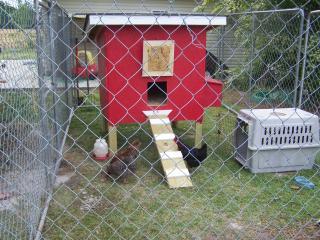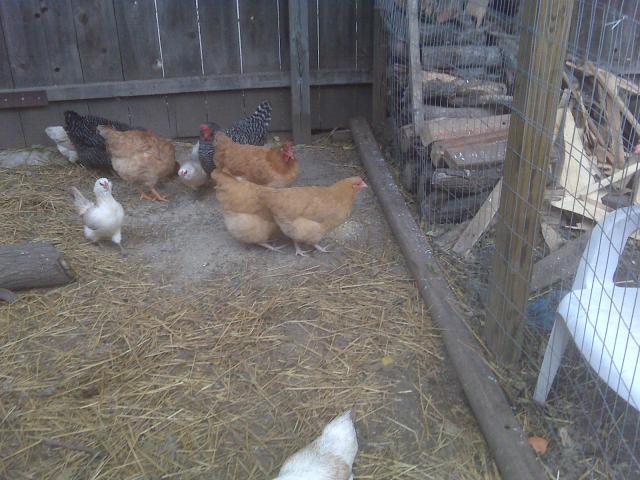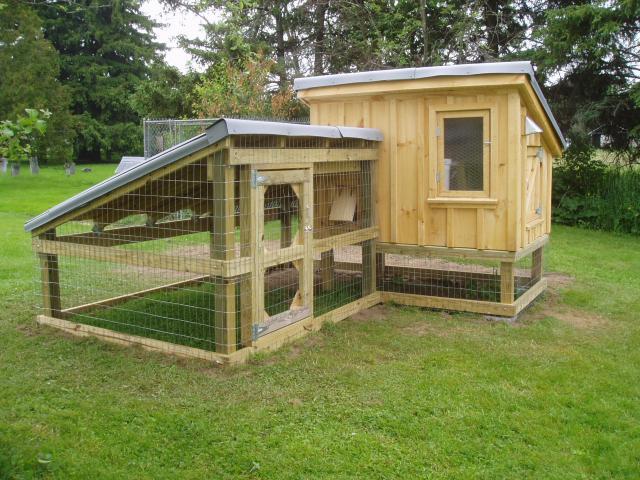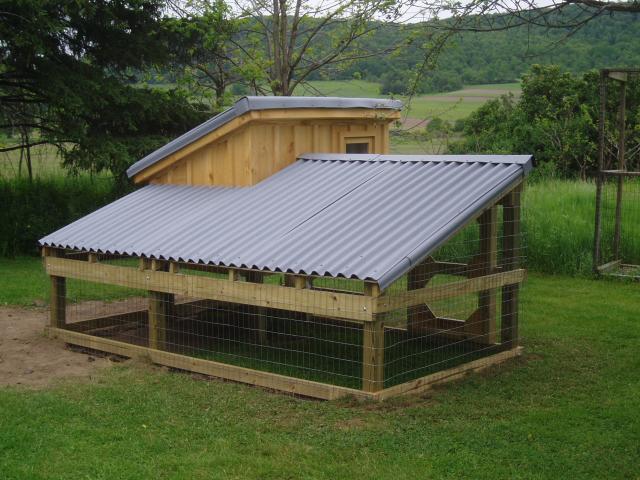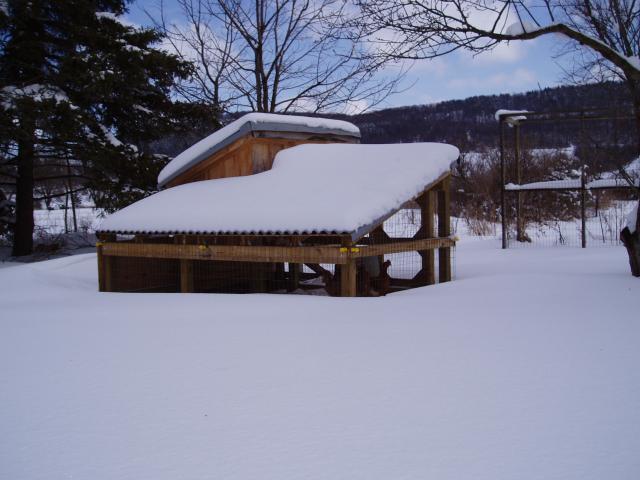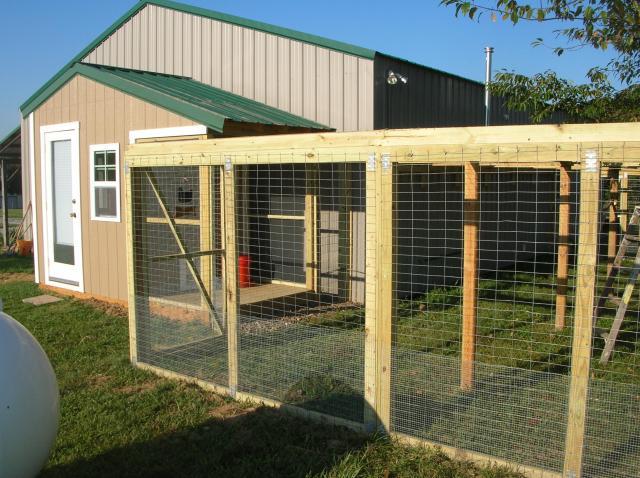I set wooden posts every 8 feet, and attached five feet high 2" x 4" welded wire to them, using 1-1/4" fencing staples. I need to put chicken wire around the bottom 24" to keep the chicken's heads in so they would not be reaching for grass outside, some predators could not so easily reach in, and to keep baby chicks from leaving the run, but have not done it yet. I had some metal roofing material available thanks to a 70 mph staight line wind that came through, so I covered about 75% of the top of the run. The rest of the top is open. There was a gap between my top and the top of the 5' high welded wire, so I cut more welded wire and filled that gap. I used the heavy staples to nail to the wood supporting my roof and J-clips to attach the wire to the wire. That was to stop chickens from flying out more than to stop predators from climbing in since predators can still get in through the section of my top that is still open. I had some pullets that would basically fly/walk up the fence and escape to get away from the rooster's advances. Around the open section, I used welded wire and attached it in a way that it sticks up a couple of feet above the welded wire. It just sticks up without any support at the top. In theory, a predator trying to climb over the wire would bend it back so it could not get over it, but since the predators could still get on top of my coop or the covered top of my run and get in, it is only really effective in keeping the chickens from flying out. I have not done it since I don't consider my run predator proof, but you could put an apron around it to keep the predators from digging in. My coop, where they are locked up at night, has the aprons and is very predator proof. My run may be predator resistant, but it is certainly not predator proof.
My coop forms one end of my run. It is over 8 feet tall. I used some staples to hold the fencing in place, then screwed some 1/2" to 3/4" thick strips of wood over the ends of the fencing. Just screwing the wood down tight holds the fence in place, but putting some screws inside the openings in the fence assures me it will not pull out. The wood covers the sharp ends of the fencing so I don't get scratched when working around there.
I don't really have good pictures of it.
There are many different ways to go about building a run. How predator proof you want to make it, how big, what materials you have available or are comfortable working with, how much you want to spend, and many more factors enter in. Good luck however you decide.






